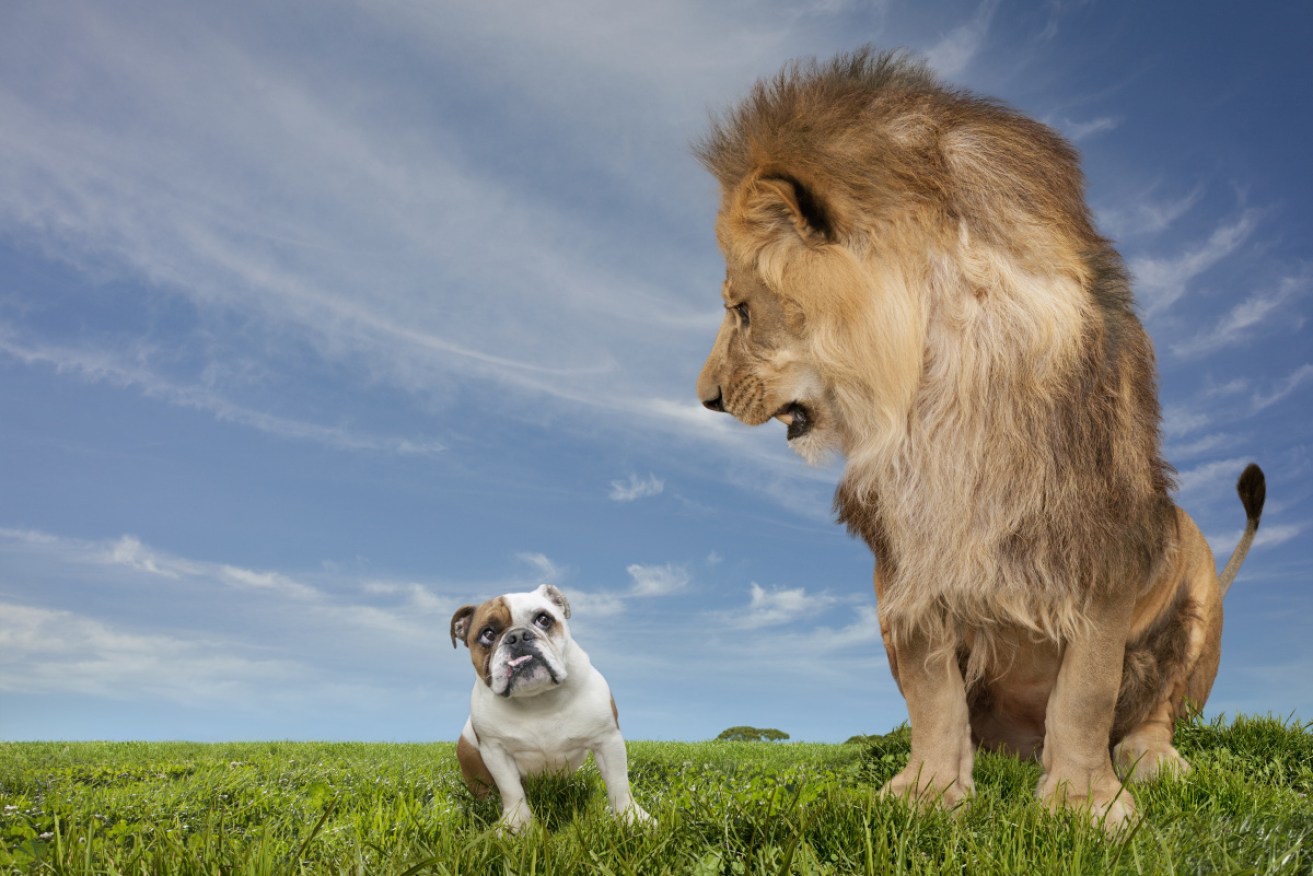Honey, we shrunk the natural world: Climate change is making animals smaller


Lions will fail to adapt under pressure of climate change; runty animals will be fine. Photo: Getty
You’ll need a better pair of binoculars for future wildlife trips – because instead of seeing elephants and lions, you’ll be looking for mice and budgerigars. Why so?
Because a new study finds that bigger-sized and longer-lived animals and birds that require specialised environments, and are less adaptable, such as rhinoceroses and eagles, will die out over the next hundred years.
The scientists from the University of South Hampton found that “small, fast-lived, highly fertile, insect-eating animals, which can thrive in a wide-variety of habitats, will predominate.”
Overall size of animals to shrink by a quarter
According to a statement from the university, the researchers predict the average body mass of mammals specifically will collectively reduce by 25 per cent over the next century.
And yes, people are to blame: the pressures of global warming, loss of habitat, deforestation, hunting, intensive farming, urbanisation – otherwise known as the raft of evils we increasingly read about, and feel powerless to change.
The research team focussed on 15,484 living land mammals and birds and considered five characteristics that relate to the role of each species in nature: body mass, litter/clutch size (the number of babies they produce in each breeding event), breadth of habitat, diet and length of time between generations.
In addition, the researchers used the International Union for Conservation of Nature (IUCN) Red List of Threatened Species to determine which animals are most likely to become extinct in the next century.
They used modern statistical tools to combine all this data to make their projections and evaluate the loss of biodiversity.
Felix Eigenbrod, professor at the University of Southampton, and one of the authors of the study said: “We have demonstrated that the projected loss of mammals and birds will not be ecologically random – rather a selective process where certain creatures will be filtered out, depending on their traits and vulnerability to ecological change.”
Previous studies have found that some animals are already physically shrinking.
Sheep, goats and sparrows shrinking already
In a wild population of Soay sheep on the Scottish isle of Hirta, average body size has decreased by approximately five per cent over the last 24 years, with climate change apparently to blame.
Researchers from the Imperial College London found sheep on the island are not growing as quickly as they once did in the milder winters, and that smaller sheep are more likely to survive into adulthood. This is bringing down the average size of sheep in the population over all.
In a 2014 study, Durham University researchers found that young Alpine Chamois, a species of goat, now weigh about 25 per cent less than animals of the same age in the 1980s.
The scientists discovered that the declines were strongly linked to the warming climate in the study region in the Italian alps, which became three to four degrees warmer during the 30 years of the study.
Unable to cope with the higher temperatures, the Chamois were resting more and spending less time searching for food and so were shrinking from lack of food. This would lead to smaller kids being born.
Even plants not immune to shrinkage
A 2018 study of house sparrows found that excessive heat during development may affect birds’ growth throughout their lives, “raising concerns that increasing summer temperatures due to climate change could drive down the average adult body size, with potential effects on the birds’ fitness.”
Finally, in 2011, researchers at the National University of Singapore found that many plants and animals were already getting smaller and many more were likely to shrink as a result of continued climate warming. “This will have repercussions across many food webs and potentially synergistic negative effects on biodiversity,” the scientists concluded.
What does that mean from a selfish human point of view?
“This could negatively impact both crop plants and protein sources such as fish that are important for human nutrition.”
In other words, our food will be disappearing before our eyes. So you’ll need those binoculars for the peas on your plate.








